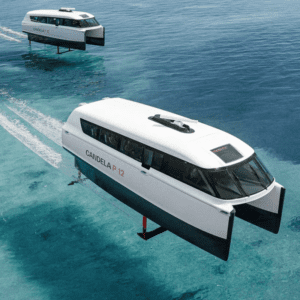Savvy digital marketers are relying on analytics to improve their mobile portfolio. Be it for scrutinising tablet and mobile traffic or ascertaining engagement levels, travel companies can delve into analytics and online data in order to help make sound decisions. EyeforTravel's Ritesh Gupta delves deeper.
The travel suppliers' mobile journey can, at best, be described as a learning curve. Given the pace that technology continues to evolve, there is no perfect mobile portfolio. Furthermore, doing away with relatively mature software development environments in order to meet modern user-interface expectations isn't an easy task. There is a need to be in sync with design and development guidelines at every step. These are just a few of the numerous challenges which means travel companies must stay on their toes.
The good news is that digital marketers are witnessing a steady increase in traffic. For travel suppliers this means they have an opportunity to strengthen their direct distribution efforts. However, the key lies in finding ways to stay at the top of the game through initiatives like capitalising on analytics and online data for a balance mobile portfolio.
Shaping up decision-making
In a recent interview with EyeforTravel.com, Ian Berman, VP business development, WorldMate, (the company's WorldMate mobile travel app recently won the EyeforTravel ‘Best Mobile Travel App' award in San Francisco) said their mobile journey had faced several challenges such as recruiting and retaining talent, identifying long-term competitive advantage, and technical challenges relating to the devices that need to be supported.
However, travel companies are finding ways to come up with answers through analytics. Michael Innocentin, director – Internet Marketing, Fairmont Raffles Hotels International talks about few key areas that need regular attention:
1. Traffic – knowing where it comes from
"Web analytics is at the centre of all of our efforts in the digital space," explains Innocentin, who says that tablet and mobile traffic represent 20% of overall traffic. That is split almost equally between mobile and tablet. Looking exclusively at mobile traffic, the group receives over 70% of its traffic from iOS devices.
Despite the proliferation of Android powered handsets Fairmont isn't currently seeing a proportionate lift in traffic. However, an increase in traffic from Android devices is expected. "We have focused on creating mobile optimised websites that work on all devices," says Innocentin. "Our first app for the Fairmont brand is an iOS app but we are looking to expand this to Android this year."
2. Ascertaining engagement
Today tablet users have similar browsing behaviour and convert at a similar rate similar to desktop users, says Innocentin. As a result Fairmont's brand websites were redesigned to be fully compatible with iPads, and other tablet devices. For example, all photo galleries, virtual tours, videos, banners and maps are touch enabled and optimised for these types of devices.
In Innocentin's experience tablet users are looking for full access to sites with pages that render well on tablets and allow for the use of native functionality. Smartphone users generally tend to be more task-oriented therefore navigation should be streamlined to allow them to complete their tasks quickly. "In the coming months we will roll out new mobile optimised versions of our brand websites and enhancements to Fairmont's iPhone application," he says.
3. Choosing the right technology
Choosing the right technology to build your mobile and tablet solutions can be difficult. According toInnocentin, while responsive design is becoming increasingly popular, and organisations such as Google recommend it, it does require a complete rebuild of your website to implement. Depending on the size and the age of your current site it can prove challenging to obtain funding and consensus to redesign an entire site with responsive design. If your organisation is in the midst of a website redesign, then building a site using responsive design is an option.
"Having said that, responsive design may not be the best option if it doesn't allow you to customise the user experience based on context," says Innocentin. Regardless of the technology used to build your mobile site, it is important to create an experience that matches your users' expectations. Smartphone users are often very task oriented when visiting mobile sites. Easy access to key tasks and streamlined navigation ensures that visitors can quickly find the information that they are looking for. It is also critical to ensure that all media used on the site is optimised for mobile devices so that users have an engaging and interactive experience.
Innocentin's recommendations include:
- Don't try to be all things to all people.
- Look through your analytics and online data to determine what tasks users are looking to complete on your mobile site.
- Feature these items in your main navigation and landing page.
- Where possible customise or re-prioritise the navigation on the landing page based on the users' current situation.
- Provide access to other tiers of information through footer links or secondary navigation.
4. Customising the offering
Access to location information from smartphones in addition to customer data gives brands the ability to tailor content and create a relevant experience.
For example, is the user at your property, at the airport, in the same city as your hotel? What services might they need in these different situations?
"Mobile provides us with additional data and opportunities to optimise the mobile customer experience," says Innocentin. In addition, travel companies now have the ability to provide contextually relevant services based on the users location and all of the other elements that the organisation knows about the user.
Clearly, as Innocentin explains, there are ways to refine and differentiate your offering on an ongoing basis. Capitalising on the strength of mobile devices and blending it with analytics and online data can pave the way for more confident and pragmatic decision-making.
To hear more insights from Michael Innocentin, director – Internet Marketing, Fairmont Raffles Hotels Internationaljoin us at the Travel Distribution Summit, Europe in London on May 23-24.
Source: Eye for Travel












